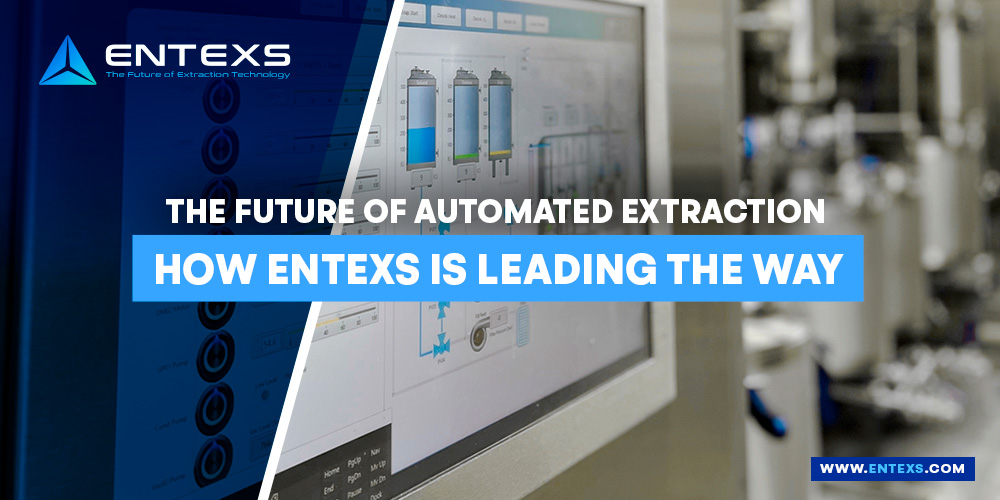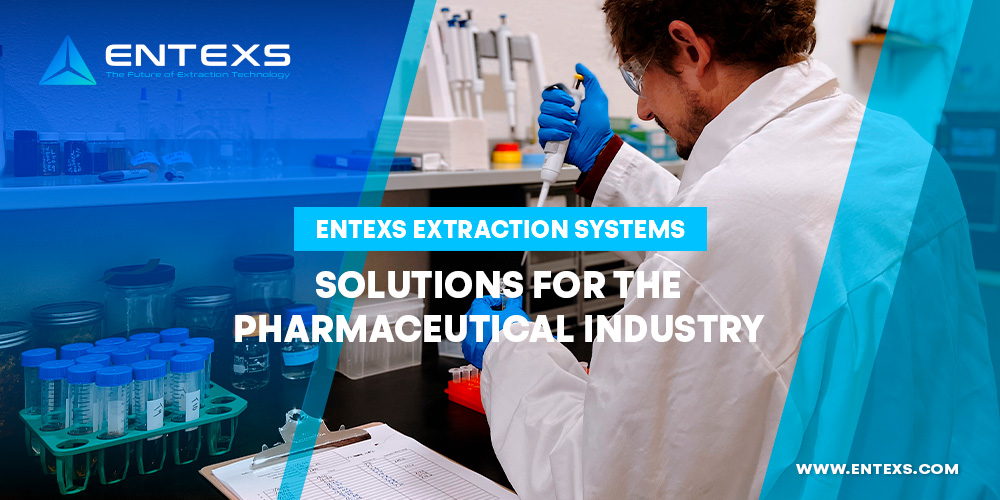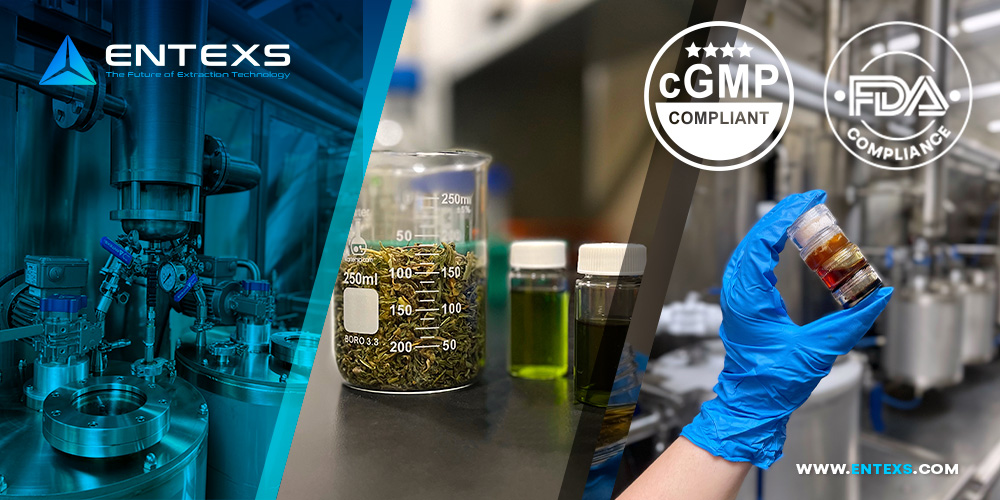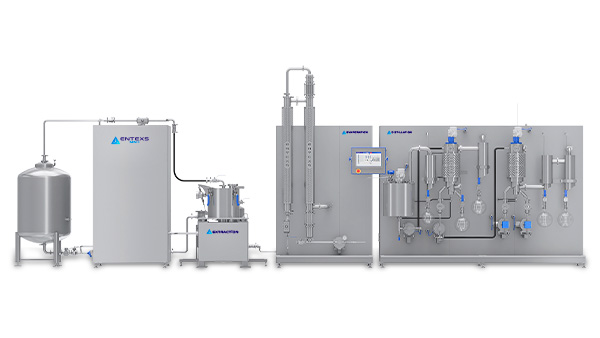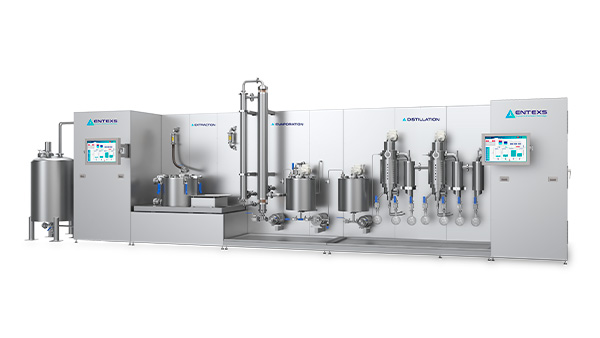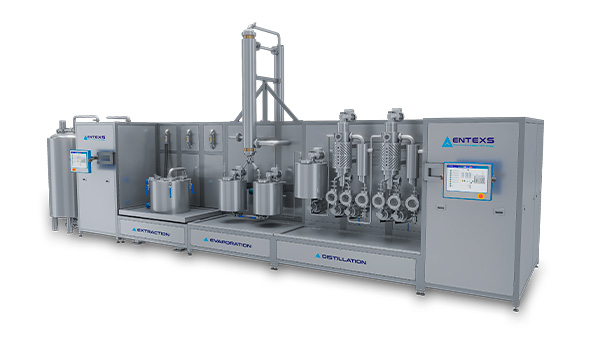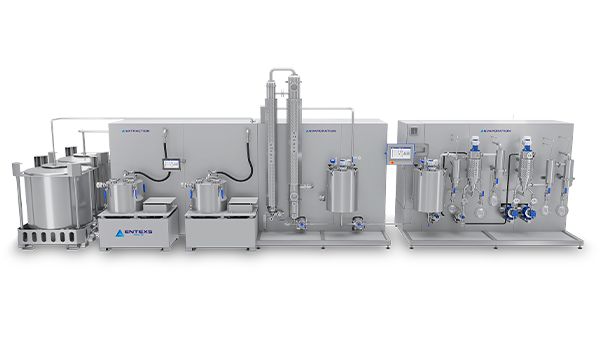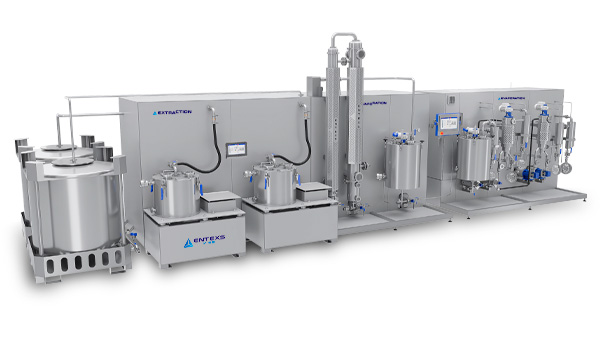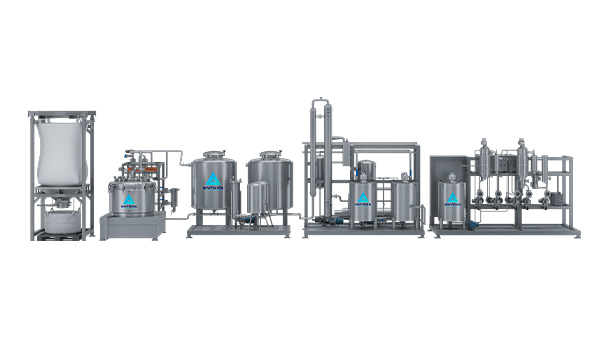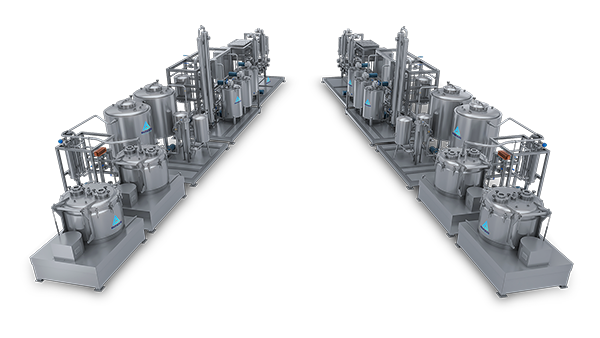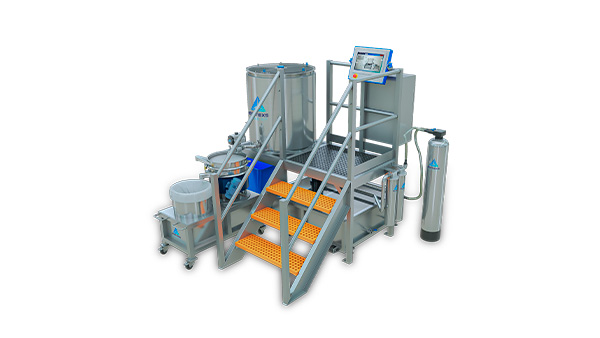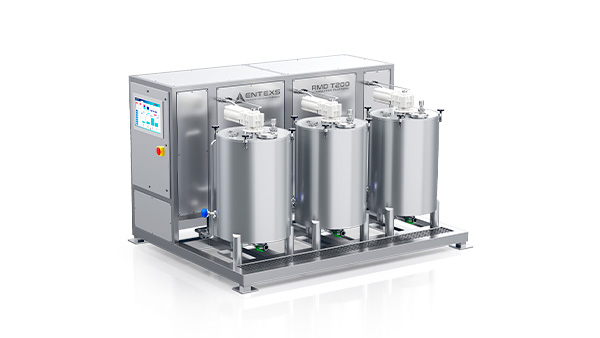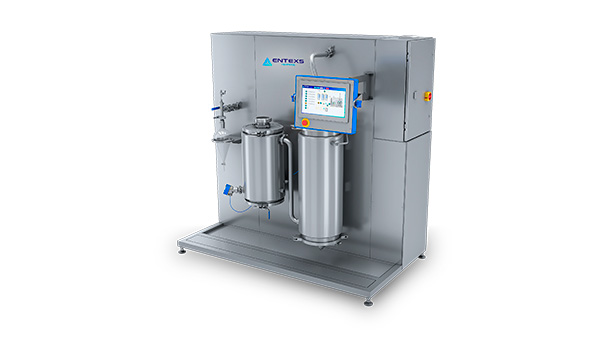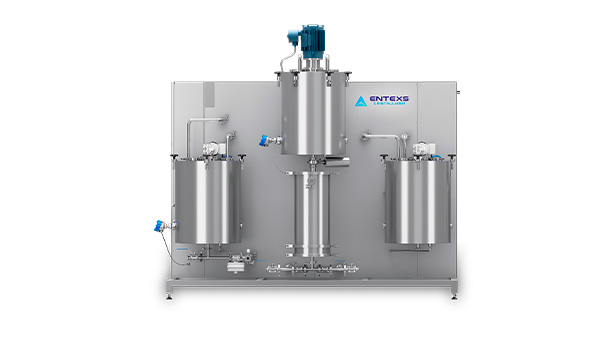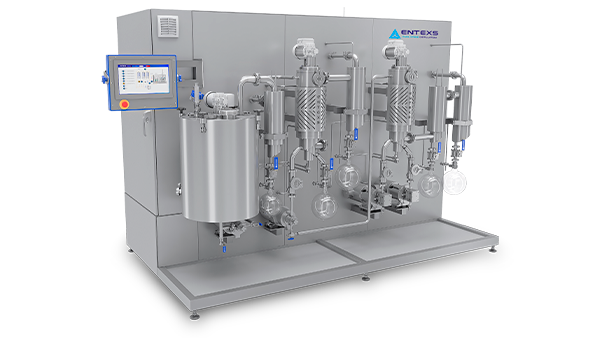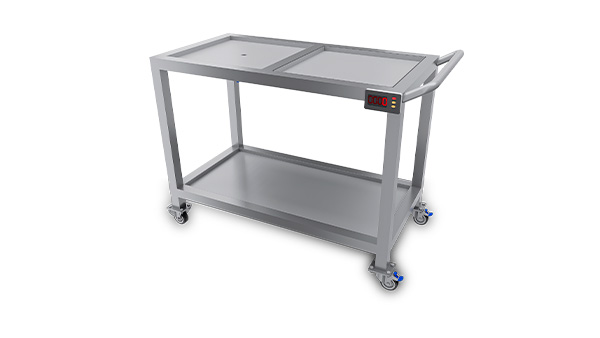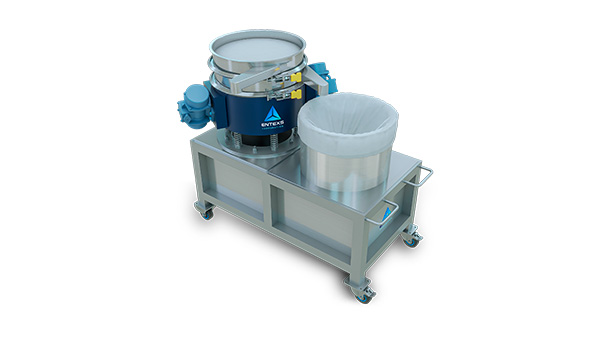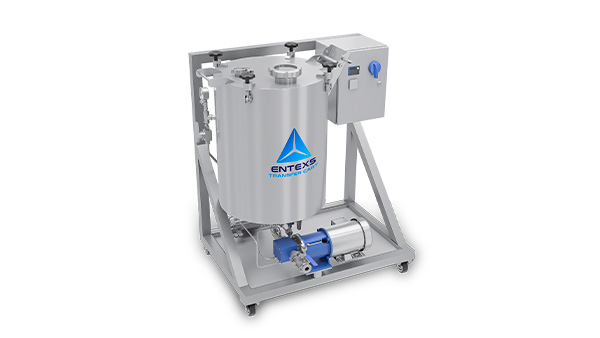Things to Consider in THC Remediation
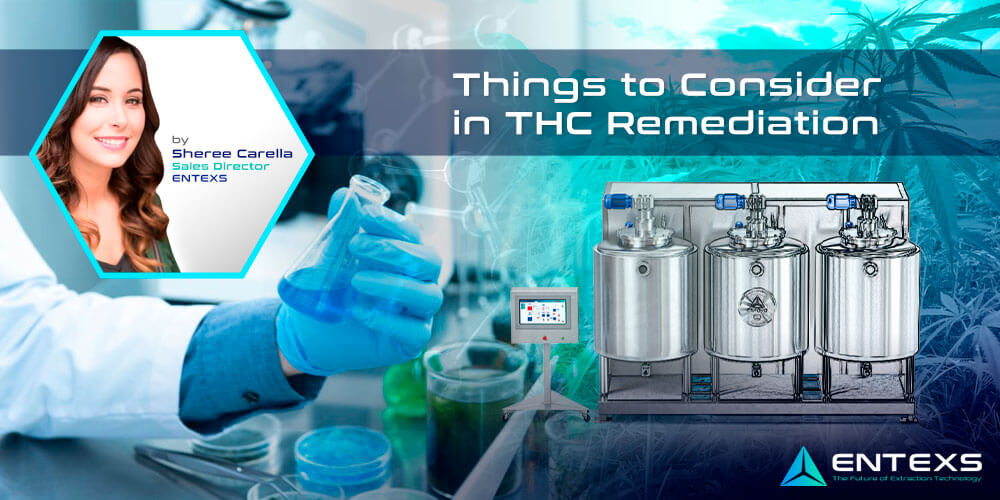
THC remediation is the process of removing or reducing delta-9-tetrahydrocannabinol (THC) from hemp-derived cannabidiol (CBD) extracts or products. In extract remediation, THC is targeted and removed using highly developed scientific methods and equipment. The result is a purified product, rich in CBD, perhaps with minor cannabinoid levels kept intact.
There are many factors that must be understood and considered when evaluating and selecting a remediation system. For any business, costs (capital expenses and operating expenses), process efficiency (low CBD loss rates), scalability, product quality, and product safety are paramount to maximizing profitability.
Let’s take a closer look at the remediation process:
Hemp plants naturally produce THC. Federal regulations require THC in CBD products to be less than 0.3%. For many consumers and businesses, the presence of any THC is unacceptable and product manufacturers must achieve non-detectable, or “ND” levels of THC, which can vary from lab to lab depending on limits of detection. Per USDA guidelines, the allowable level of THC (∆9-THCA*0.877 + ∆9-THC + all other THC isomers) in hemp biomass at harvest, however, can be as high as 1.0% [1], and experts project that 40% or more of hemp harvested for consumer products will exceed the 0.3% ∆9-THC limit. [2] Even when the biomass is within the legal limits, the extraction process creates a concentrated oil, inherently spiking THC levels. Aside from dilution, and if seeking current Good Manufacturing Practice (cGMP) certification or US Food and Drug Administration (FDA) registration, remediation is the only way to bring these THC levels into compliance or down to ND levels, as per the laboratory certificate of analysis (CoA).
An ideal process would remove THC only. At the molecular level, however, THC and CBD are very similar making it difficult to remove THC without affecting CBD. Therefore, some CBD will be lost in the remediation process. This loss is typically reported as a percentage or mass and relates the change in CBD pre- and post-remediation. For a processor, higher losses mean lower CBD, directly impacting the bottom line in the wrong direction.
Current remediation technologies include chromatography or processes that involve THC conversion or degradation. Chromatography has been around the longest and is very effective at removing THC. There are many types of chromatographic systems. Preparative chromatography is commonly used to separate a mixture and collect the compounds of interest. Like any technique, there are pros and cons to centrifugal partition chromatography (CPC), supercritical carbon dioxide (SFC), and flash chromatography. Depending on the method, CBD losses can be high (can exceed 30% or more). Some methods like CPC require relatively harsh solvents whereas SFC does not. Equipment costs can be high, and to scale up, these costs can be amplified many times, potentially resulting in solutions for scalability into the tens of millions of dollars.
Most of the non-chromatography systems, such as enzymatic catalyzation, degradation, and isomerization, are relatively new in the market. These solutions are typically much less expensive than chromatography, however their CBD loss rates can still be in the 10% to 30%+ range, and processing capacities are limited to 50 to 100 liters per day to achieve compliant THC levels. To achieve < 800 PPM ∆9-THC levels, most systems generally require a second pass or additional run-time, making the effective daily capacities roughly half of the published values when ND THC is required. Processors requiring greater capacity and wishing to scale up will learn that these systems do not scale. Rather, the only way to increase daily capacities is to add more systems. This takes up more square footage in the facility and requires more technical labor to manage the additional units, making this impractical for high-capacity processors combined with the logistical labor involved in moving in-process material from one step to the next.
To properly envision scale that every extractor will be facing in the coming years, your most basic 100,000 pound per day extraction facility will require the equivalent of 103 55-gallon barrels per day being moved from extraction to purification steps like distillation and remediation. Independent units for any of these steps create a logistical nightmare for any facility trying to operate efficiently without unnecessary places for loss, human error, and ultimately costs impacting global competitiveness.
Utilizing cryo-ethanol crude, the ENTEXS RMD-T series equipment has demonstrated CBD loss under 5% on batches as small as a few liters and as large as a few thousand liters. Overcoming the square-cube law, keeping loss rates low as scale increased was not always easy, but after years of development, these systems can now be scaled reliably while maintaining low losses and not impacting the total time required for remediation.
These systems work in concert with an analytical HPLC (high-performance liquid chromatography). The HPLC is typically used to determine the THC level in the product prior to remediation, to monitor the levels during remediation, and to identify when THC content has reached the desired level. Some systems also require optimization or tuning based on the HPLC results to achieve peak performance.
There is at least one mainstream remediation system manufacturer that requires processors to send a sample from each lot of biomass to the manufacturer’s lab for analysis. Based on this analysis, the manufacturer defines the particular system settings for that batch. The turnaround time for this analysis can take from one to four weeks, which can have a significant impact on operating efficiencies, resulting in lost production time. For the RMD-T Series, an HPLC is similarly utilized; however, during the system training, operators are taught how to perform this monitoring and optimization in-house, providing processors with full control over their remediation timeline.
As the hemp/CBD industry grows at an extremely fast pace, federal regulations and governance among quality control standards are also maturing rapidly. As the FDA, USDA, and other industry organizations look out for consumer safety and bring in best practices from other industries, processors must best anticipate what regulatory constraints they may be soon subjected to. It is important to select systems and processes that will be able to comply not only today, but throughout the growth of the coming decade following additional federal regulations on hemp products. There are cGMPs, which are enforced by the FDA, that address the design, monitoring, and control of manufacturing processes and facilities. To further support product quality and safety, many operators will also want to utilize solventless processes. For this, it is important to understand the solvents or other additives used during the remediation process.
As for the costs of these various systems, they can range quite dramatically. Chromatography is the most expensive in the short-term with the highest upfront costs as well as operating costs. For the rest of the systems, however, the comparison is not as simple. Operators should consider the upfront acquisition cost (CapEx), ongoing operating costs (consumables, staff, square footage, etc.), and loss (CBD loss rate). For many of the non-chromatography systems, considering the upfront cost on a per-liter basis (purchase price/daily capacity) may make the systems seem similar, but don’t stop there. Per PanXchange, with market rates for THC-remediated CBD crude at over $1,000 per liter at the time of this writing, the CBD loss rate amounts to a significant expense often overlooked. At a loss rate of 20%, this amounts to an effective cost of $200 per liter! When these costs are summed, the total cost of ownership over a 5-year period can vary substantially. These operating expenses generally add up to many times the initial acquisition costs.
The RMD-T series is a cost effective and scalable remediation solution with a maximum loss rate of 5% when utilizing cryo-ethanol-extracted winterized & decarboxylated oil. It will also retain and enhance minor cannabinoids, resulting in a richer quality hemp extract, and the equipment and processes are solventless.
There is a lot to think about when selecting a remediation system. As you work through your own evaluation, there are a few things you can do to make sure you understand exactly what you are getting. Requesting the lab results, as well as evaluating the starting and ending masses, of a product before and after remediation will allow you to verify CBD loss. In this comparison, make sure that the batch size of the sample data is representative of what you expect your typical batch size will be. In addition to reviewing the CoA, have the manufacturer perform a test run on a sample of your oil to verify run times and end-product quality. And finally, it is important to verify that the systems and solvents will support your plans for cGMP or other industry standards.
There are multiple options now available for remediation, but as you can see, not all are created equal. Be diligent, understand the real operational details, and make the best decision.
1] USDA Agricultural Marketing Service. Hemp Production. USDA website.
[2] Cowee M. Chart: 20% of hemp lots will exceed 0.3% THC limit next year, USDA estimates. Hemp Industry Daily. Published December 12, 2019; accessed June 30, 2021.
This article was originally published in: Extraction Magazineare sol
Contact us for more information
Contact our sales team for more information on custom cbd and hemp extraction systems, state-of-the-art thc remediation systems or preview our catalog of systems and modules available through our website.
Related Topics
- Analysis
- Cannabis Industry
- CBC Extraction
- CBD Extraction
- cbd isolate
- CBG Extraction
- cGMP
- Chromatography
- CO2
- Cold Water Extraction
- Ethanol Extraction
- Extraction 101
- Extraction Equipment
- Extraction Machine
- Extraction System
- GMP
- GMP Certification
- Hemp Extraction
- HPLC
- inline remediation
- Remediation
- Remediation Equipment
- Terpene Extraction
- terpenes
- THC
- THC Remediation
- All
- Extraction
- THC Remediation
- All
- Extraction
- THC Remediation
- Email: info @ entexs.com
- Toll Free: (888) 960-3689
- 3720 Trade Way, Cameron Park, CA 95682, USA
- ENTEXS is proud to be made in the USA
- © 2025 ENTEXS Corporation
- Privacy Policy



